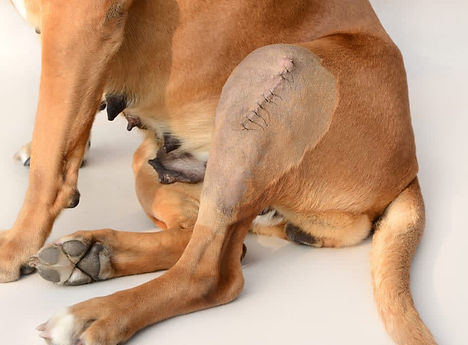Small Animal Physiotherapy
Small animal veterinary physiotherapy is used to support the recovery, mobility, and overall wellbeing of pets following injury, surgery, or as part of managing long-term conditions like arthritis or neurological disorders.
It combines techniques such as manual therapies, electrotherapies and therapeutic exercise to help reduce pain, improve strength, restore movement, and speed up healing.
Physiotherapy can also be an important preventative tool, helping to maintain joint and muscle health in aging or active pets.
Whether your animal is recovering from surgery, dealing with a chronic condition, or simply needs help staying active and mobile, physiotherapy offers a gentle, tailored approach to improve their quality of life.
How could physiotherapy help your animal?

-
Improve pain management & inflammation
-
Promote healing
-
Maintain and rebuild muscle mass
-
Improve joint flexibility
-
Improve balance and co-ordination
-
Increase proprioceptive awareness

Conditions which can benefit from physiotherapy;

Orthopaedic Conditions
-
Osteoarthritis- commonly termed Arthritis
-
Hip dysplasia
-
Elbow dysplasia
-
Amputations
-
Fractures
-
Spondylosis
-
Luxating patella
-
Femoral head and neck excision
-
Cruciate ligament disease
-
Hip replacement
Neurological Conditions
-
Lumbosacral disease
-
Chronic degenerative radiculomyelopathy (CDRM)
-
Canine Polyneuropathy
-
Intervertebral disc disease (IVDD)
-
Fibrocartilaginous embolism (FCE)
-
Cervical Spondylomyelopathy (Wobblers)
-
Peripheral nerve injuries
-
Vertebral malformations
-
Discospondylitis


Soft Tissue Injuries
-
Wound healing
-
Tendon ruptures/tears
-
Muscular asymmetries
-
Ligament injuries/tears
_edited.jpg)